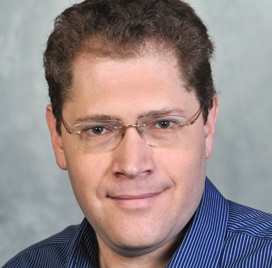Valery Krizhanovsky

Prof. Valery Krizhanovsky and his group in the Weizmann Institute’s Molecular Cell Biology Department develop methods for ridding the body of senescent cells, those that have stopped dividing and haven't died, leaving the way for new cells.
Recent work by Prof. Valery Krizhanovsky has revealed that a protein called p21 might play a leading role in aging—by mediating the levels of a special class of age-associated cells that accumulate in body tissues. These findings add to Prof. Krizhanovsky’s previous work, in which he advanced our understanding of senescence by developing the first-ever method for counting such cells in tissues. His approach, which involves staining tissues for molecular markers of senescence then imaging them with advanced techniques, revealed a huge jump in senescent cells over time. In young mice, no more than 1% of cells in any given organ were senescent; but in two-year-old mice, the level of senescent cells in some organs rose to 15%.
Several studies in mice suggested that elimination of senescent cells from the organism leads to the extension of healthspan and lifespan. However, abilities to eliminate senescent cells pharmacologically are only in their initial stages. Prof. Krizhanovsky’s lab was one of the first in the world to identify a drugable molecular pathway that can be utilized for the pharmacological elimination of senescent cells. They were able to eliminate senescent cells from mice using a pharmacological approach and to study the short term effect of such elimination. Now Krizhanovsky’s lab uses the tools they developed in order to understand the effect of senescent cells on organismal aging as a whole and on specific age-related diseases, such as IPF and COPD. They study the effect of pharmacological elimination of senescent cells on the whole organism level to establish elimination of senescent cells as a promising strategy for extension of healthspan and lifespan as well as directed treatment of age-related diseases, and uncover the molecular mechanisms of the effect of senescent cells in these conditions.
Recent work by Prof. Valery Krizhanovsky has revealed that a protein called p21 might play a leading role in aging—by mediating the levels of a special class of age-associated cells that accumulate in body tissues. These findings add to Prof. Krizhanovsky’s previous work, in which he advanced our understanding of senescence by developing the first-ever method for counting such cells in tissues. His approach, which involves staining tissues for molecular markers of senescence then imaging them with advanced techniques, revealed a huge jump in senescent cells over time. In young mice, no more than 1% of cells in any given organ were senescent; but in two-year-old mice, the level of senescent cells in some organs rose to 15%.
Several studies in mice suggested that elimination of senescent cells from the organism leads to the extension of healthspan and lifespan. However, abilities to eliminate senescent cells pharmacologically are only in their initial stages. Prof. Krizhanovsky’s lab was one of the first in the world to identify a drugable molecular pathway that can be utilized for the pharmacological elimination of senescent cells. They were able to eliminate senescent cells from mice using a pharmacological approach and to study the short term effect of such elimination. Now Krizhanovsky’s lab uses the tools they developed in order to understand the effect of senescent cells on organismal aging as a whole and on specific age-related diseases, such as IPF and COPD. They study the effect of pharmacological elimination of senescent cells on the whole organism level to establish elimination of senescent cells as a promising strategy for extension of healthspan and lifespan as well as directed treatment of age-related diseases, and uncover the molecular mechanisms of the effect of senescent cells in these conditions.